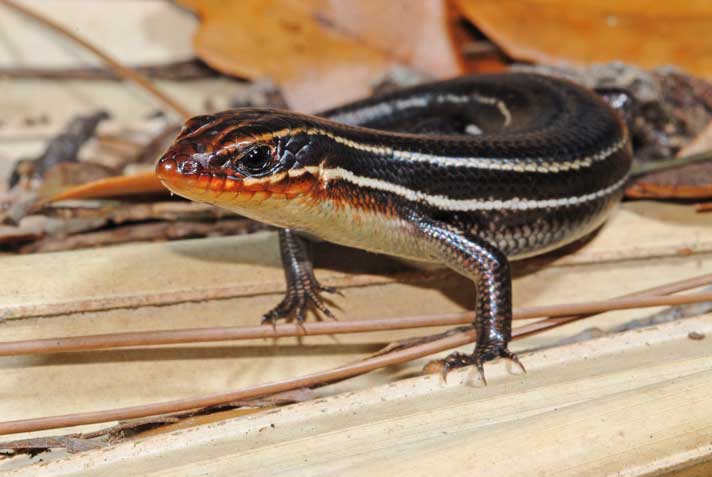Most skinks native to the United States are small (under 6 inches in total length) and tend to be of the long, slender body conformation.
Question: Some of the cute, little skink lizards are colorful and seem like they’d be great pets. Why are skinks so under-represented in the world of reptile pets?
Francine D’Ambrosia, Edison, N.J.

bill love
Skinks tend to be secretive and spend much of the daylight hours rummaging through the detritus on the ground for insects.
Answer: Most skinks native to the United States are small (under 6 inches in total length) and tend to be of the long, slender body conformation. They are nervous and fast-moving. They scurry from hiding place to hiding place in nature, and they run as soon as their feet touch the ground, even in captivity. That kind of behavior is not conducive to the hands-on pet that most new lizard keepers crave.
Want To Learn More?
Some skinks will also readily bite when held. This can be shocking to children, but their bites are generally too inconsequential to matter to an adult. Rarely can most kinds muster enough power to even break the skin. But just the fact that they try to bite when held doesn’t endear them to many as pets.
Skinks tend to be secretive and spend much of the daylight hours rummaging through the detritus on the ground for insects. When not actively foraging, they typically hide from sight. This makes them less interesting vivarium inhabitants than many other fully diurnal lizards like bearded dragons.
Lastly, most skinks autotomize their tails rather easily as a natural escape mechanism. Handling by children can trigger this as the animal squirms to run away and is grabbed by the tail. Although they can re-grow their tails, it takes a while and looks ugly—not a pretty sight most petkeepers wants to show off.
By the way, I assumed you were not referring to the popular larger skinks, like blue-tongued (Tiliqua sp.) and prehensile-tailed skinks (Corucia zebrata). They buck the stereotypical skink descriptions outlined above.
Bill Love photographs herps in nature, writes and lectures. He assists his wife, Kathy, with her business, CornUtopia, and via his company, Blue Chameleon Ventures, leads nature tours to view herps in Madagascar.


